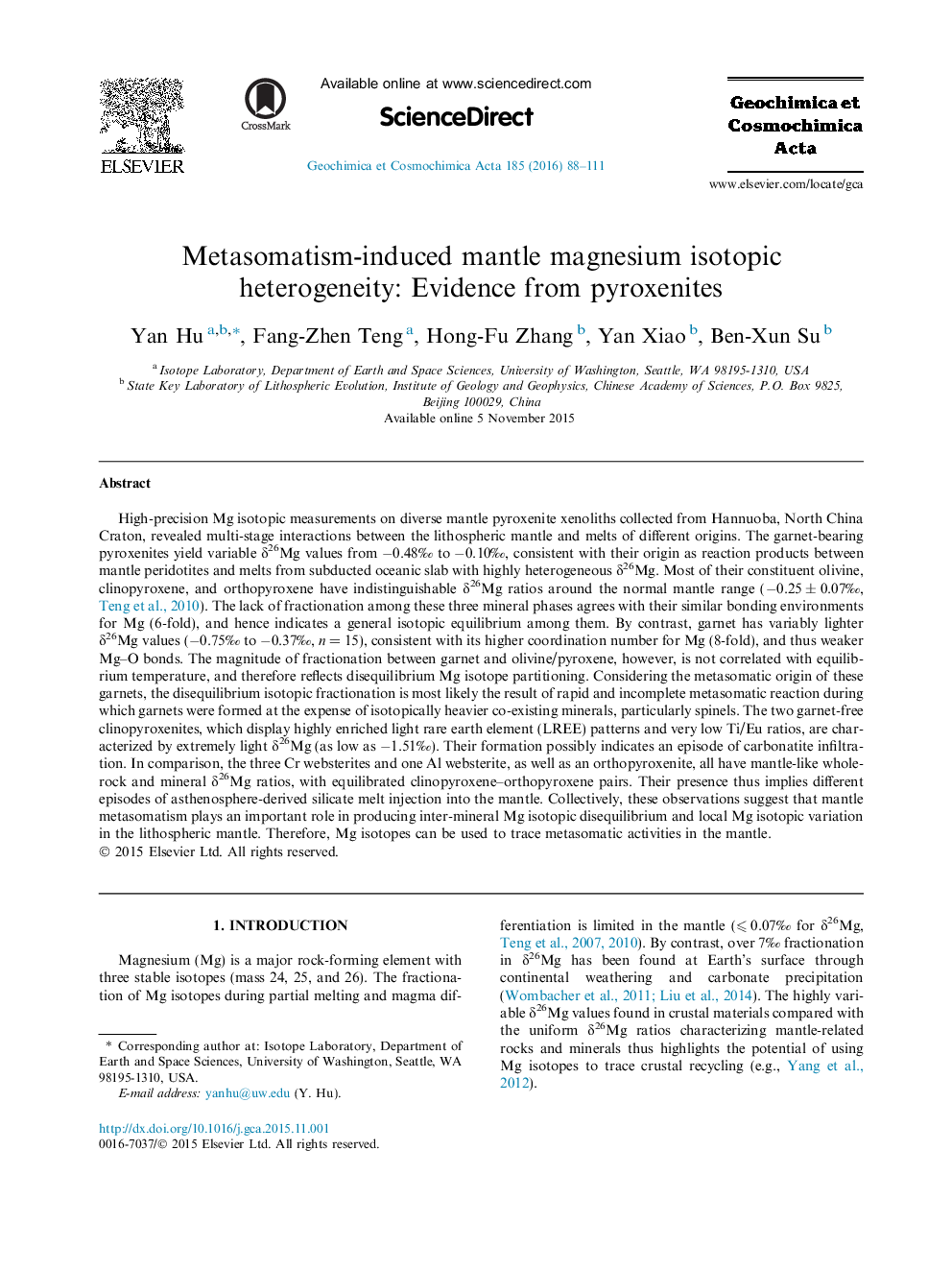| Article ID | Journal | Published Year | Pages | File Type |
|---|---|---|---|---|
| 6437352 | Geochimica et Cosmochimica Acta | 2016 | 24 Pages |
High-precision Mg isotopic measurements on diverse mantle pyroxenite xenoliths collected from Hannuoba, North China Craton, revealed multi-stage interactions between the lithospheric mantle and melts of different origins. The garnet-bearing pyroxenites yield variable δ26Mg values from â0.48â° to â0.10â°, consistent with their origin as reaction products between mantle peridotites and melts from subducted oceanic slab with highly heterogeneous δ26Mg. Most of their constituent olivine, clinopyroxene, and orthopyroxene have indistinguishable δ26Mg ratios around the normal mantle range (â0.25 ± 0.07â°, Teng et al., 2010). The lack of fractionation among these three mineral phases agrees with their similar bonding environments for Mg (6-fold), and hence indicates a general isotopic equilibrium among them. By contrast, garnet has variably lighter δ26Mg values (â0.75â° to â0.37â°, n = 15), consistent with its higher coordination number for Mg (8-fold), and thus weaker Mg-O bonds. The magnitude of fractionation between garnet and olivine/pyroxene, however, is not correlated with equilibrium temperature, and therefore reflects disequilibrium Mg isotope partitioning. Considering the metasomatic origin of these garnets, the disequilibrium isotopic fractionation is most likely the result of rapid and incomplete metasomatic reaction during which garnets were formed at the expense of isotopically heavier co-existing minerals, particularly spinels. The two garnet-free clinopyroxenites, which display highly enriched light rare earth element (LREE) patterns and very low Ti/Eu ratios, are characterized by extremely light δ26Mg (as low as â1.51â°). Their formation possibly indicates an episode of carbonatite infiltration. In comparison, the three Cr websterites and one Al websterite, as well as an orthopyroxenite, all have mantle-like whole-rock and mineral δ26Mg ratios, with equilibrated clinopyroxene-orthopyroxene pairs. Their presence thus implies different episodes of asthenosphere-derived silicate melt injection into the mantle. Collectively, these observations suggest that mantle metasomatism plays an important role in producing inter-mineral Mg isotopic disequilibrium and local Mg isotopic variation in the lithospheric mantle. Therefore, Mg isotopes can be used to trace metasomatic activities in the mantle.
